Continuing the trend away from the suv nomenclature Peugeot have launched the 408 as a saloon like fastback. It’s got the latest infotainment system plus comes in hybrid form as well as petrol and diesel versions. The 408 follows on from the 308 hatchback with increased interior space. The cabin similarly cocoons the driver and offers up the latest iCockpit.
The 408 is a well equipped and slightly sportier cousin to the Citroen C5 X. There will only be a petrol and two plug-in hybrid options with decent electric range. The hybrid version combines a 1.6-litre petrol engine with an electric motor and a 14.2kWh battery pack, giving an electric-only range of around 50-60 kms. It comes with a 3.7kW charger which takes three and a half hours to get to full using a 7kW home wall box. When you upgrade to the 7.4kW charger, the time significantly reduces to one hour and 40 minutes.
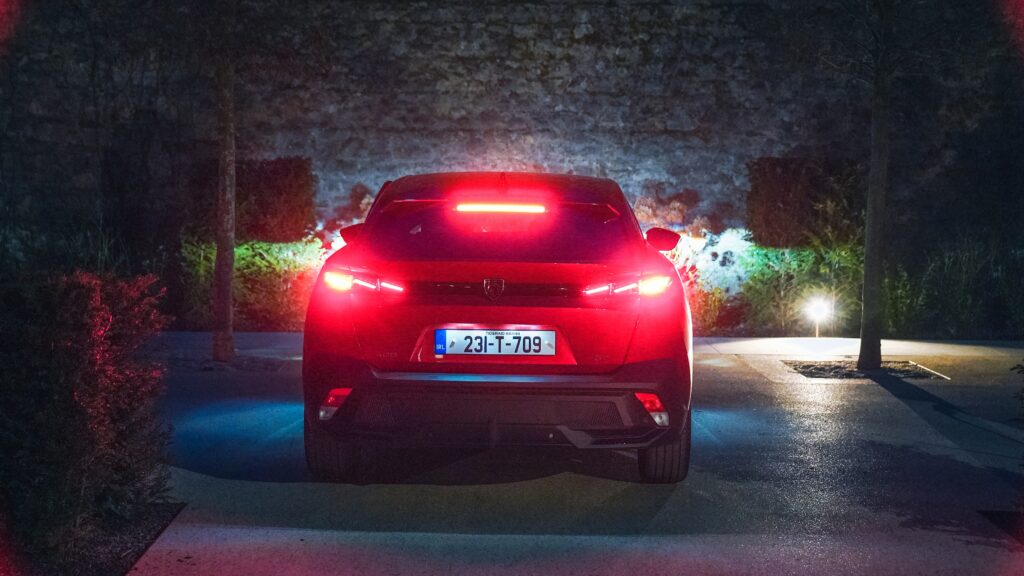
There are three trim levels to choose from, starting with the Allure. If you stretch to the next level up (Allure Pack) you get a few extra luxuries such as adaptive cruise control, front parking sensors and blind-spot monitoring and the top of the range is the GT model.
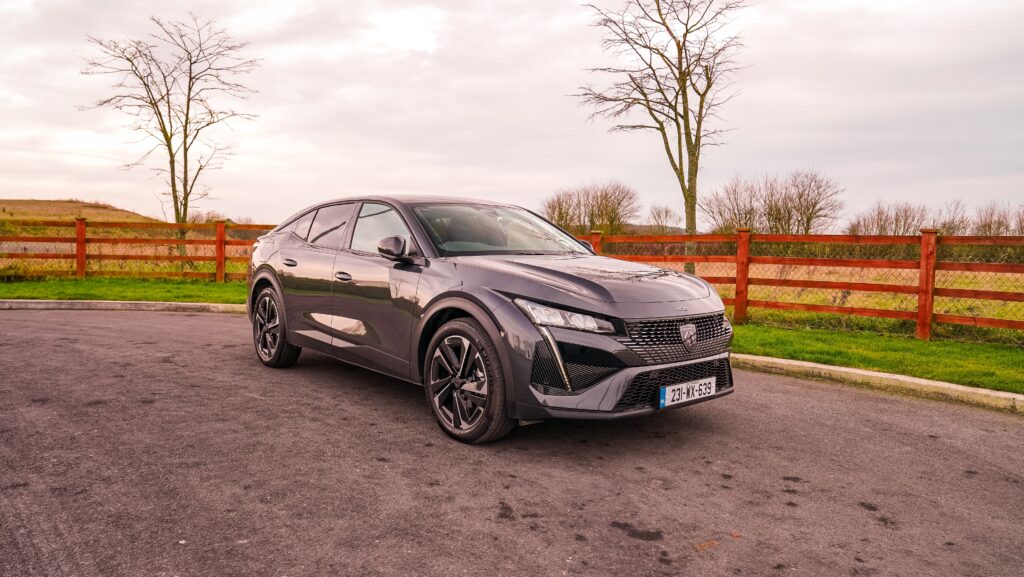
The 408 has high quality materials used throughout the interior and it feels well put together. Peugeot continues to use the high-set digital instrument panel that you view above the smaller but easy to use steering wheel which can cut off some of the display depending on your seating position. The driver sits higher up in the 408, giving it that SUV driving style and importantly for comfort, lumbar adjustment comes as standard.
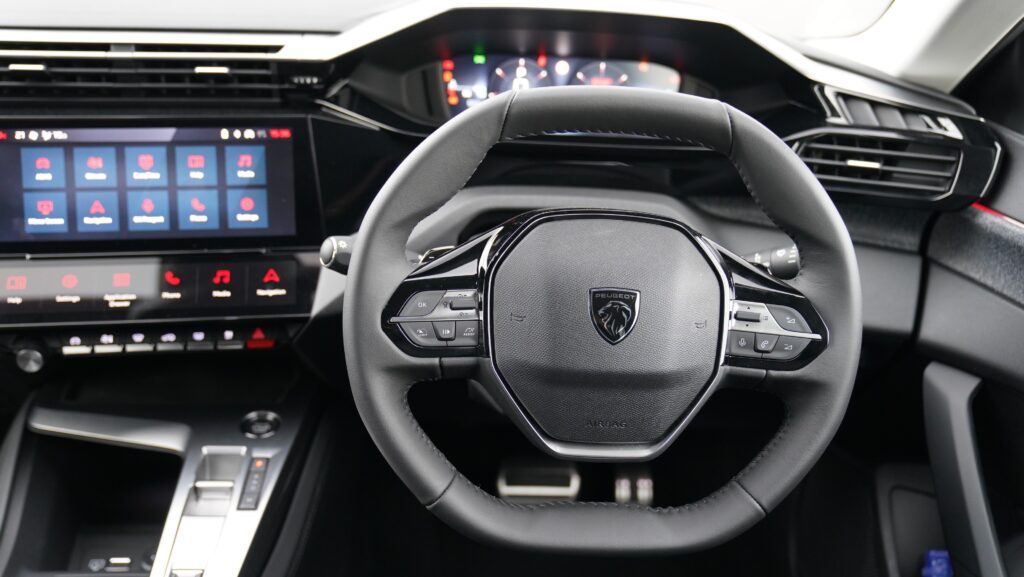
There’s a 10.0in touchscreen infotainment system, with a touchscreen panel below it offering some shortcut buttons to hop between menus. The system has a number of menus and settings it’s well laid out and you get Android Auto and Apple CarPlay so you can bypass the built-in software if you wish. It sits nicely on the dash and offers lots of information which is well presented. Climate controls which mostly are accessed via the touchscreen and not standalone knobs or dials.
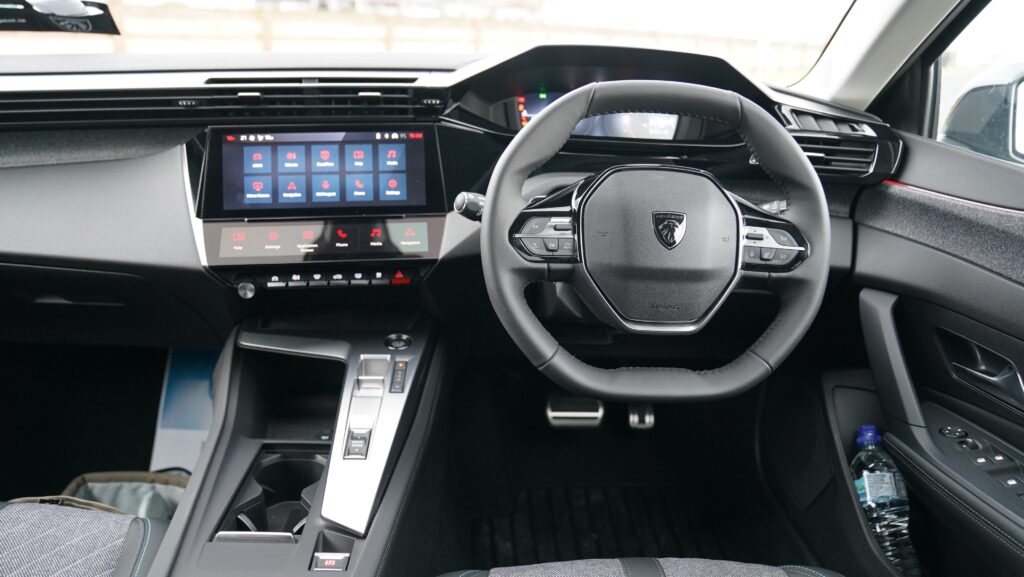
The petrol engine is smooth and refined and as with most 3 cylinder turbos it lets you know when it’s being pushed. The cabin is very well insulated and it’s a most pleasant environment to cocoon from the outside elements. It’s enjoyable to drive and as with all Peugeots the steering is well weighted.
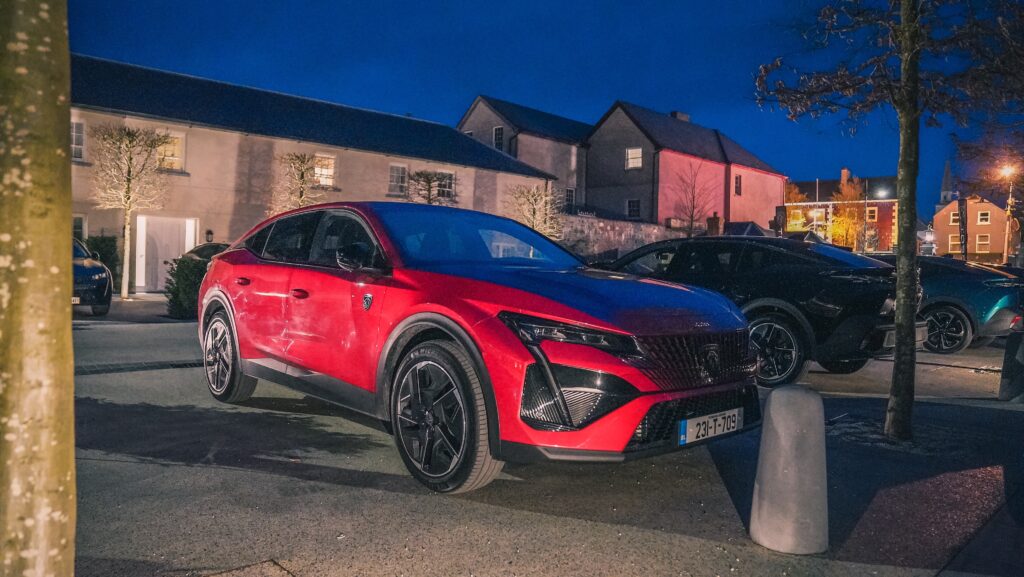
Due to its lengthy rear, boot space is good with 471-litres for the plug-in hybrids, and 536 litre no s in petrol versions. There’s plenty of space for front seat passengers and the cubbies are dotted about in all the right places including large water bottle holding door bins. Rear seat passengers have a much more space than the 308. The rear seats are easy to fold down using levers in the boot as well as on the shoulders of the seats. The seats split fold 60/40 but don’t recline or slide.
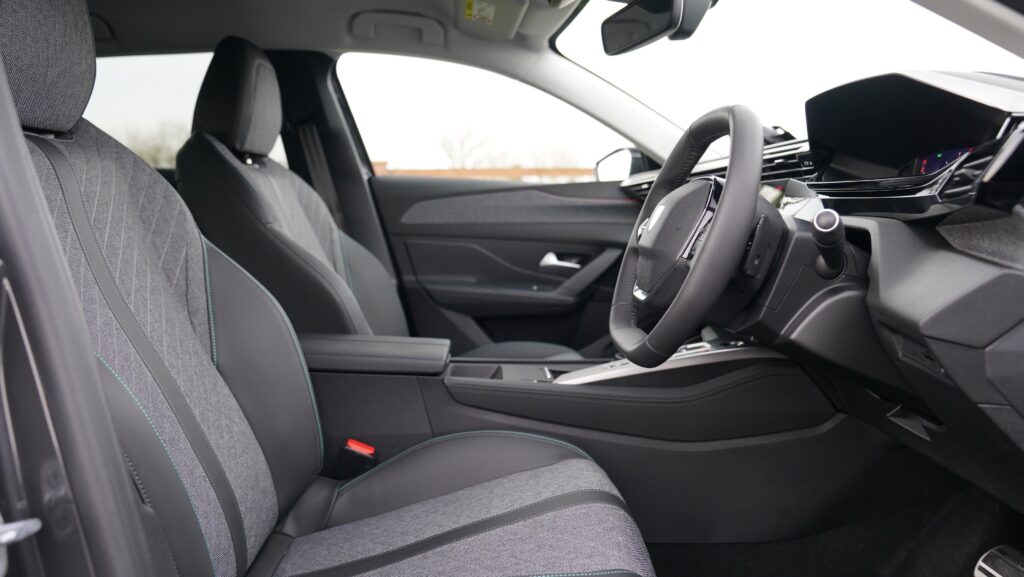
The engine range starts with the Puretech 130, a 1.2-litre three-cylinder petrol engine with 128bhp, followed by two plug-in hybrids (PHEVs): the Hybrid 180 and the Hybrid 225. The PHEV Peugeot 408s each have a 1.6-litre petrol engine, an electric motor and a 12.4kWh lithium-ion battery. The difference between the two versions is that the Hybrid 225’s engine produces more power. A fully electric version will be launched later on.
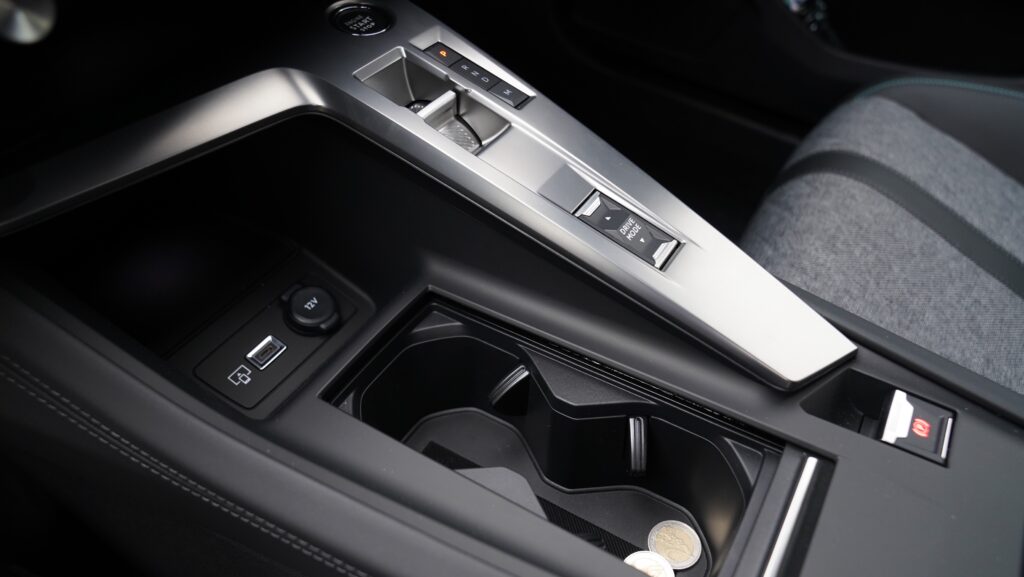
The 408 has a very upmarket and plush feeling interior and feels solidly put together. It’s accomplished in the city and is perky on the b roads if not outright sporty. It disguises its suv looks with that low slung tapering rear but feels like an suv due to the adjusted drivers height with greater visibility than the 308. You may not get some options such as a pano roof but it’s an excellent alternative with a price advantage if you do your research.
